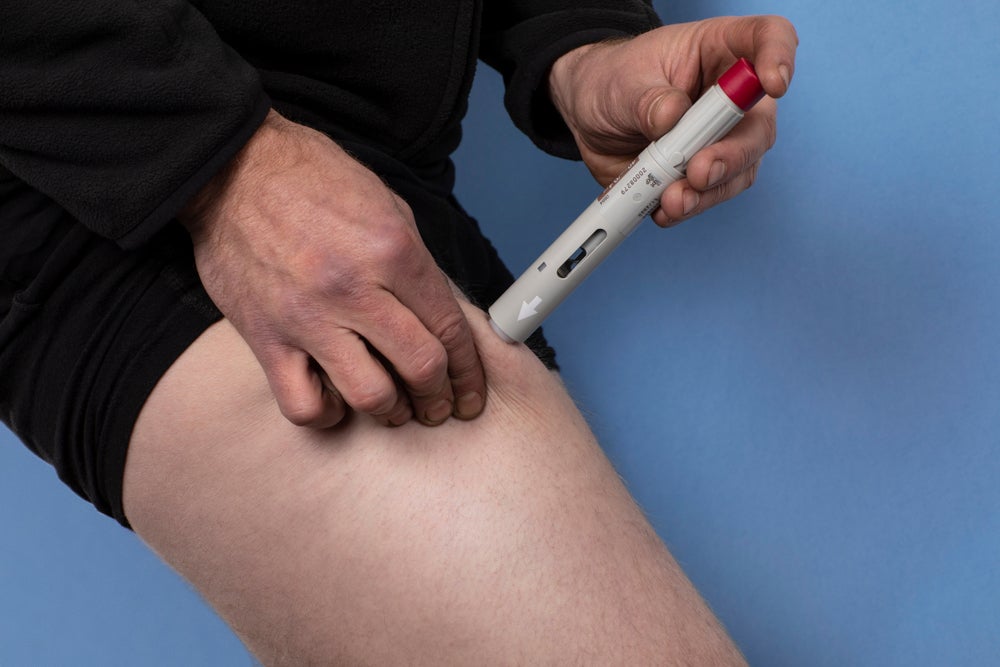
After a tumultuous year that weathered the continued impact of a bear market, many in biotech are looking for signs of improvement in 2023. However, industry experts have buckled up in anticipation of continued challenges this year. While some say that the tide could turn in H2 2023, others are more apprehensive.
News of layoffs and restructuring have evoked concerns that 2023 could be a year of attrition that will push companies to prioritise key candidates and hold onto their finances. While there will be some exceptions, fundraising and initial public offerings (IPOs) will be difficult for most. Instead, reverse mergers, like privately-held Elicio Therapeutics’s plans to merge with the NASDAQ-listed company Angion Biomedica, might be a sign of things to come. Although expert opinions differ on the future of special purpose acquisition companies (SPACs), some companies are continuing to explore their use. In December 2022, AEON Biopharma, a biopharmaceutical company, announced its plans to go public through a merger with the SPAC Priveterra Acquisition Corp.
In such times, experts expect partnerships between biotechs and big pharma, like the Anima Biotech/AbbVie deal announced earlier this month, to become even more popular. However, such partnerships depend on successful research and can also quickly fade. On January 13, the biotech Morphic Therapeutic lost its partnership with Johnson & Johnson’s subsidiary Janssen. In 2022, another partnership between AbbVie and Morphic was also dropped.
Such challenges were a thematic mainstay of this year’s J.P. Morgan Healthcare Conference in San Francisco, which finished on January 12. Robert Lyne, CEO of the venture capital (VC) firm Arix Bioscience, says that the general sentiment at the conference points to expectations of a longer recovery period for public markets to become more open to activity and investment.
A game of musical chairs
Lyne compares the current situation to a game of musical chairs, where the status of each company essentially depends on where they were positioned when the market shifted. Consequently, companies were “unlucky” if they were short on funding when the market downturn started, he says.
How well do you really know your competitors?
Access the most comprehensive Company Profiles on the market, powered by GlobalData. Save hours of research. Gain competitive edge.

Thank you!
Your download email will arrive shortly
Not ready to buy yet? Download a free sample
We are confident about the unique quality of our Company Profiles. However, we want you to make the most beneficial decision for your business, so we offer a free sample that you can download by submitting the below form
By GlobalDataSee Also:
In 2020 and 2021, there was a boom in biotech companies going public. “We had over 100 companies go public in the sector in 2020 and 2021. Many of those companies were uncharacteristically early in development,” notes Barbara Ryan, senior advisor of Life Sciences at Ernst & Young. With the reopening of the economy months after the Covid-19 pandemic began, there was a V-shaped recovery, which gave way to increased interest rates and inflation, says Ryan. The IPO landscape seen in 2020 and 2021 should be viewed as a distortion rather than a norm, says Sameer Khambadkone, partner at ICR Westwicke, adding that this will likely not come back in 2024.
One of the greatest challenges for biotechs is rising interest rates, which are inversely related to their valuations, explains Ryan. In 2022, the Federal Reserve raised the benchmark interest rate seven times, finishing in the 4.25–4.5% range in December 2022. On January 20, Christopher Waller, a member of the Board of Governors of the Federal Reserve, supported a 0.25% increase, which could be implemented at the end of January, marking a relative deceleration in interest rate increases. While the possibility of a recession lingers, some expect interest rates and inflation to peak in 2023, which could favour growth stocks and benefit biotech, adds Ryan.
Inflation affects net present value (NPV) models used by biotech companies, given that they are a decade away from potential revenue, says Jack O’Meara, CEO of the biotech Ochre Bio. Pierre Socha, partner in the Early-Stage Fund of the VC firm Amadeus Capital Partners, says he views investments in blocks of 5–10 years.
Companies at earlier stages of development have been hit the hardest, says Ryan. This is especially the case for public biotechs that are now having a difficult time securing money on the market, notes Ryan. Around 200 companies are now trading below their enterprise value, she says. While the stock market indices may be down by 40%, the market cap of some companies is down by 90%, leading to news of restructurings and closures, says Ryan.
While it is only January, several companies have already announced cuts and layoffs this year. UK-based biotech ReNeuron announced plans to lay off 40% of its employees, and Cyteir Therapeutics will be firing 70% of its staff. Others, like Elevation Oncology and Fate Therapeutics, have announced similar plans.
Alternate funding strategies
The fiscally challenging environment means that smaller biotechs need to be especially careful when it comes to cash burn rates, as the nature of the market has changed, says Lyne. Since the 2008 financial crisis, the cost of capital was cheap, but that has now risen, he adds. While this is not unique to biotech, the sector is particularly exposed to these complications since the companies are loss-making during the development phase, he adds.
Moreover, VC funds face challenges in not making returns on their portfolios, which means they will have to hold onto them longer, says Gabor Garai, co-chair of the Life Sciences Team at Foley & Lardner LLP, in an email to Pharmaceutical Technology. This will also make fundraising challenging and adversely impact peoples’ enthusiasm about life science companies, creating a vicious cycle, he adds.
There is also the option of going the SPAC route. However, Garai describes SPACs as a fad and notes that eventually underperforming SPACs will be forgotten by investors. The degree of difficulty in completing these transactions has grown exponentially, says Khambadkone. In December 2022, AEON Biopharma announced plans to go public through a merger with the SPAC Priveterra Acquisition Corp. The current state of the market played a role in AEON’s decision to merge with a SPAC, says the company’s CEO Marc Forth, adding that IPOs are largely unavailable. The success of these mergers is very specific to the transaction itself, says Forth.
IPOs will also likely not be an easy avenue to raise funds for the time being. Khambadkone says that the issue is not necessarily whether a company can go public, but how it will trade afterwards. While Garai says it will take time for the market to right itself, Lyne went further and said he does not expect to see a rush of successful IPOs in the coming months. Still, there could be more activity in the second half of the year compared to the first, says Chris Brinzey, partner at ICR Westwicke.
Surviving a tough biotech market
In the backdrop of these challenges, companies may prioritise licensing and partnerships with larger pharma earlier than usual, says Lyne. However, this will give even greater leverage to large players, allowing them to be more selective with partners, says Marcelo Bigal, CEO of Ventus Therapeutics.
In September 2022, Bigal’s Ventus Therapeutics partnered with the Danish giant Novo Nordisk and received a $70 million upfront payment with the possibility of milestone payments of up to $633 million. However, he emphasises the deal was not done for purely financial reasons, but rather as an opportunity to license treatments, which the company did not want to pursue.
While it is hard to say if specific therapeutic areas will be particularly hit by these ongoing challenges, investors could favour those pursuing a well-understood disease profile and drug modality, says Lyne. But such areas are highly competitive. In contrast, having a successful product that addresses an unmet medical need would bring value and attract potential interest, says Robert Jacks, CEO of Sparrow Pharmaceuticals, a biotech that develops potential treatments in endocrinology and rheumatology. Most recently, Sparrow announced that the first patient was dosed on a Phase II trial of SPI-62, a potential Cushing’s Syndrome treatment. According to Bigal, there is a cycle of attractiveness in biotechs where certain indications or disease areas get increased attention at a point.
Although the market is relatively hostile, the largest commercialised pharma companies have tremendous amounts of capital, says Ryan. Quoting EY’s annual Firepower Report, Ryan says pharma companies hold $1.4 trillion of dealmaking firepower. This capital could be spent on de-risked approaches, such as partnering, rather than acquisitions and mergers, she notes.
In a nutshell, companies with enough funding and positive data could perform well in 2023, whereas those with significant capital constraints and uninspiring data will not, Ryan says. However, to Lyne, this is not necessarily a negative development.
“As we come through this cycle, ensuring that the industry is more robust and [there is] a more judicious allocation of capital, [that] will make for a more sustainable industry in the medium to long term,” says Lyne.






